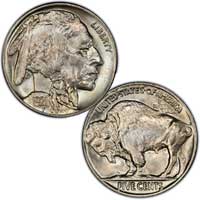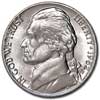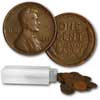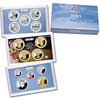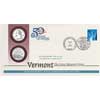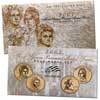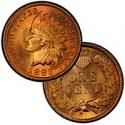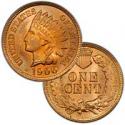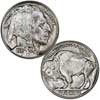Both strike and luster are almost universally excellent. Satiny pieces may be found, but the majority display very bright and frosty luster.
The only negative with this date is a slightly higher than usual incidence of laminated planchets, perhaps reflecting a change in the Philadelphia Mint’s supplier. During and after World War I, the U. S. Mint alternated between buying planchets ready-made from commercial vendors and producing them in-house. Some statistics were kept on the relative quality of each, but the results were inconclusive. After the mid-1920s, the Mint reverted to producing its own planchets, though in recent years it has relied almost entirely on vendors.
The date 1921 is more boldly engraved in the master die than on previous issues, and this is the only date in the series in which the numeral 1 has a serif. Perhaps this was another attempt at improving the durability of the date. Whatever the reason for this change, numerals of more conventional style were again used when coinage resumed in 1923.
Varieties:
- A two-feathers variety has the innermost feather partially effaced through vigorous polishing of the obverse die (FS-1921-401).
- A minor obverse doubled-die variety is also known, this being noticeable in the Indian’s eyebrow and nostrils.
| Philadelphia | San Francisco |
| 10,663,000 | 1,557,000 |

